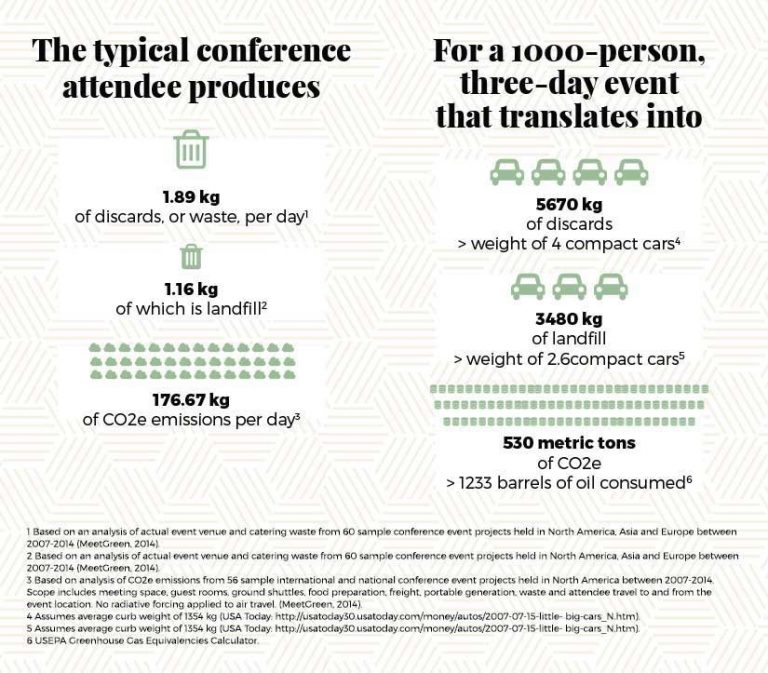18 March 2021
Climate change is not a myth and natural resources are finite. Studies12 show that at the current rate of production, by 2050 there would be more plastic in the ocean than fish. Our environmental awareness has grown and evolved over the past decade. This, in turn, has led to an increase in the public consciousness of our collective effect on the environment. Industries across the world have taken various steps to ensure that they meet environmental standards and stay relevant in the global marketplace.
Making slight changes in our daily lives is much more straightforward than planning an environmentally-friendly event. When planning an event, you need to look at the bigger picture and acknowledge the broader impact. All events have an environmental impact, which inevitably increases proportionally to the size of the event. According to a report, the average conference attendee produces over 170 kilograms of CO2 emissions per day.3 A three-day conference for 1,000 people creates 5,670 kilograms of waste, over half of which will go directly to landfill.

So, let us take a look at the areas that contribute the most to an event’s environmental footprint.
Travel
The carbon footprint of an event depends heavily on the geographical scale of its participants. From which countries/cities the participants start their journey to how many different transportation mediums they use until they reach their destination, these all add up to the CO2 emissions of the event. And let’s not forget the trip back. Global aviation (including domestic and international; passenger and freight) accounts for2:
- 1.9% of greenhouse gas emissions (which includes all greenhouse gases, not only CO2)
- 2.5% of CO2 emissions
- 3.5% of ‘effective radiative forcing’ – a closer measure of its impact on warming
The 2.5% may seem a small number but keep in mind it’s about the same emissions as those a country like France emits.
Meals and food waste
The first main issue regarding providing meals for your attendees is sourcing the necessary ingredients in the needed quantities. In an ideal world each venue or caterer would be able to buy all the food locally, so as not to emit more carbon through its food supply chain. But this cannot be achieved in most situations, especially for large events that span over some days. Furthermore, there is the inevitable food waste. The average event wastes between 15% – 20% of the food it produces3. There are trade-offs in all aspects when trying to create a sustainable, in-person conference.
Materials and waste
Whether printed or digital, all communication has an impact. The collateral produced for an event is an important contributor to its environmental footprint. The agenda, flyers, poster, banners, and other needed communications have an impact that depends on their volumes, materials used, finish and format. Furthermore, promotional material, in various forms, is frequently distributed in events. This has an environmental footprint in its production phase and contributes to the event’s waste, since a portion of this gets discarded. Choosing the materials used for the collateral and creating a comprehensive waste management system can reduce an event’s environmental footprint by at least 10%4.
Understanding the environmental footprint of an event is not an easy task. There are many aspects that need to be taken into consideration and most areas are overlapping. But not everything needs to be tackled at once. A good place to start is identifying all the areas of impact and which activities contribute the most.
- Find out more about our Sustainable Conferencing Grants and how to apply for one.
[1] https://meetgreen.com/wordpress/wp-content/uploads/2017/09/eventfoot.pdf
[2] The latter two numbers refer to 2018, and the first to 2016, the latest year for which such data are available https://ourworldindata.org/co2-and-other-greenhouse-gas-emissions
[4] https://meetgreen.com/wordpress/wp-content/uploads/2017/09/eventfoot.pdf








You must be logged in to post a comment.